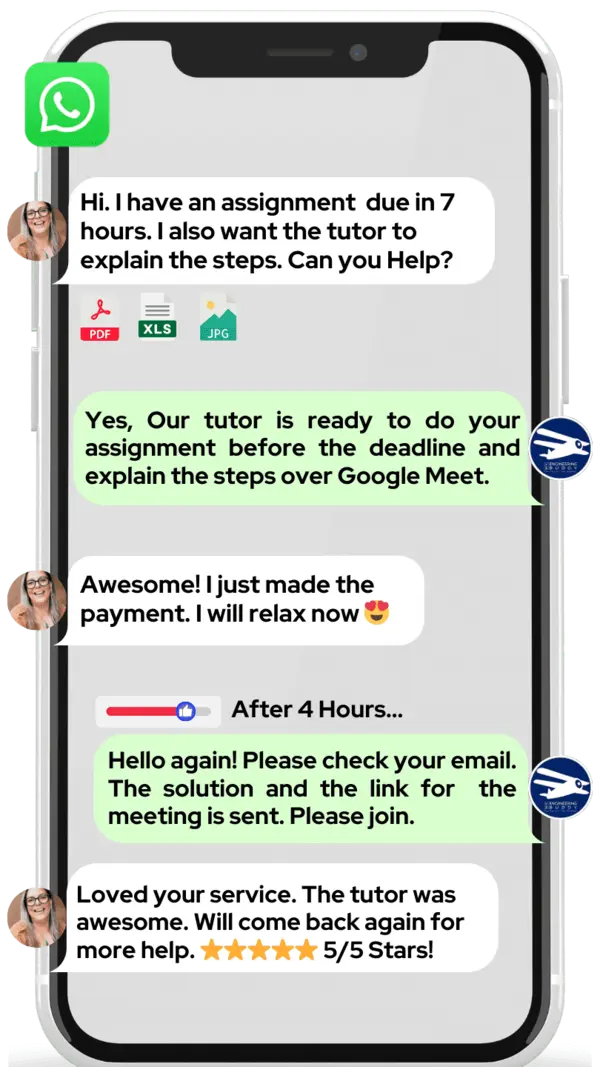

Hire The Best VHDL Tutor
Top Tutors, Top Grades. Without The Stress!
10,000+ Happy Students From Various Universities
Choose MEB. Choose Peace Of Mind!
How Much For Private 1:1 Tutoring & Hw Help?
Private 1:1 Tutors Cost $20 – 35 per hour* on average. HW Help cost depends mostly on the effort**.
VHDL Online Tutoring & Homework Help
What is VHDL?
VHDL stands for VHSIC Hardware Description Language (VHSIC = Very High Speed Integrated Circuit). It’s a text-based language used to model, simulate and synthesize digital circuits. Engineers write code that describes how a CPU or FPGA should behave, then tools translate it into hardware. It’s like writing software for silicon.
Also known as VHSIC HDL, sometimes just “HDL” in casual convos. IEEE 1076 refers to the standard number, so you might see “IEEE 1076 VHDL” too.
Major topics include entity-architecture pairs, which define module interfaces and behavior. Concurrent statements describe parallel hardware processes, while sequential statements within processes model step-by-step logic. Packages and libraries organize reusable components. Signal vs variable distinctions are crucial. Timing constructs like after-clauses handle delays. Testbenches simulate real test scenarios—for example, verifying an ALU’s add/subtract operations in a CPU design.
Late 1980s: VHDL started as a DoD project for documenting Very High Speed Integrated Circuits. In 1987, IEEE 1076-1987 became the first standard. 1993 brought IEEE 1076-1993, adding synthesis features. 2002 revision introduced protected types and textio. In 2008, further enhancements for improved parametrization showed up. The 2019 update refined object-oriented features. Over decades it’s been adopted widely for FPGA and ASIC design. A tool like Xilinx Vivado uses these standards to generate bitstreams for real boards, making VHDL indispensable in modern digital electronics. Oops, one spelling mistake here: programmig.
How can MEB help you with VHDL?
If you want to learn VHDL, MEB offers one‑on‑one online VHDL tutoring with a personal tutor just for you. If you are a school, college, or university student and want to get top grades in assignments, lab reports, live tests, projects, essays, or dissertations, try our 24/7 instant online VHDL homework help. We like to chat on WhatsApp, but if you don’t use it, send an email to meb@myengineeringbuddy.com
Although anyone can use our services, most of our students are from the USA, Canada, the UK, Gulf countries, Europe, and Australia.
Students come to us for help when: • Subjects or courses feel too hard • They have too many assignments • Concepts are tricky or take too long to understand • They have health or personal issues • They work part‑time, miss classes, or can’t keep up with their professor
If you are a parent and your ward is struggling with VHDL, contact us today and help your ward ace exams and homework. They will thank you!
MEB also offers support in over 1,000 other subjects. Our tutors are experts who make learning easy and help students succeed. It’s important to know when you need help—our tutors are here to make school less stressful.
DISCLAIMER: OUR SERVICES AIM TO PROVIDE PERSONALIZED ACADEMIC GUIDANCE, HELPING STUDENTS UNDERSTAND CONCEPTS AND IMPROVE SKILLS. MATERIALS PROVIDED ARE FOR REFERENCE AND LEARNING PURPOSES ONLY. MISUSING THEM FOR ACADEMIC DISHONESTY OR VIOLATIONS OF INTEGRITY POLICIES IS STRONGLY DISCOURAGED. READ OUR HONOR CODE AND ACADEMIC INTEGRITY POLICY TO CURB DISHONEST BEHAVIOUR.
What is so special about VHDL?
VHDL is a hardware description language used in electrical engineering to design and simulate digital circuits. It lets students and engineers write code that models the timing and structure of real hardware components before creating them. This makes VHDL unique because it bridges the gap between software development and physical electronics, offering a clear view of how a circuit behaves.
Compared to software programming courses, VHDL gives hands‑on hardware insight and early error detection, making designs more reliable. Its reusability and precise control help in complex projects. However, VHDL can be hard to learn, with long code blocks and strict syntax. Simulating large designs may be slow, and beginners often find it less flexible than high‑level programming languages.
What are the career opportunities in VHDL?
Once you master VHDL basics, you can take advanced courses in digital system design, FPGA architecture, or ASIC implementation. Universities often offer VLSI and embedded systems programs that build on VHDL skills. Research areas like low‑power circuits and AI hardware acceleration are growing fast.
After VHDL training, you can work as an FPGA, hardware design, or verification engineer. These roles involve writing VHDL code, running simulations, and testing digital circuits. You might work on network switches, telecom devices, or AI accelerator hardware in real‑time applications.
Studying and preparing for VHDL tests helps you learn to model hardware accurately and understand timing constraints. It builds skills in optimizing resources and debugging logic designs. Structured preparation also boosts confidence when working in labs or facing technical interviews.
VHDL is widely used for FPGA prototyping, ASIC design, and hardware verification. Its strengths include code reusability, clear timing control, and easy simulation of concurrent processes. Engineers apply VHDL in communication systems, consumer electronics, and IoT devices.
How to learn VHDL?
Start by installing a free VHDL simulator like GHDL or use online tools such as EDA Playground. Learn the basic syntax—entities, architectures, signals—by following step‑by‑step tutorials. Write simple code for gates and counters, then simulate and debug it. Gradually move to modules and testbenches. Practice small projects, review example code, and keep experimenting to build your skills.
VHDL has a learning curve, especially if you’re new to hardware design. It’s not impossible—once you grasp its structure and think in terms of signals and events, writing code becomes more intuitive. Regular practice and reviewing real examples make it much easier.
You can certainly learn VHDL on your own using online tutorials, videos, and books. However, a tutor can guide you through common pitfalls, give personalized feedback, and keep you on track. If you’re short on time or need extra help with assignments and projects, a tutor speeds up learning.
Our tutors at MEB offer one‑on‑one online sessions, code reviews, assignment help and exam prep tailored to your pace. We work around your schedule, answering questions 24/7. Whether you need a quick concept review or in‑depth project support, we’re here to help at an affordable fee.
Most beginners reach basic proficiency in about 4–6 weeks with a few hours of study per week. To become confident in writing full modules and testbenches, plan on 2–3 months of regular practice. Your background in digital logic will make this faster.
Useful resources (about 80 words): YouTube channels like VHDLWhiz and nandland.com offer clear walkthroughs. Educational sites such as VHDLwhiz.com, ASIC-World.com, EDAPlayground.com and FPGA4student.com provide tutorials and online simulators. Key books include “VHDL Programming by Example” by Douglas Perry, “Digital Design and Computer Architecture” by Sarah Harris and David Harris, “A VHDL Primer” by J. Bhasker, and “Fundamentals of Digital Logic with VHDL Design” by Brown and Vranesic. These cover theory, examples, and practical projects.
College students, parents, tutors from USA, Canada, UK, Gulf etc: if you need a helping hand—be it 24/7 online 1:1 tutoring or assignment support—our MEB tutors can help at an affordable fee.








































